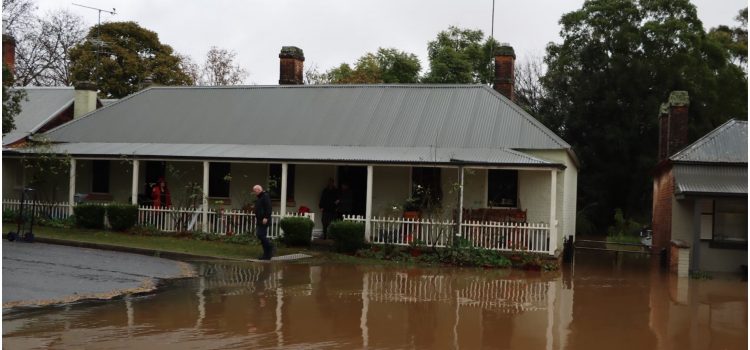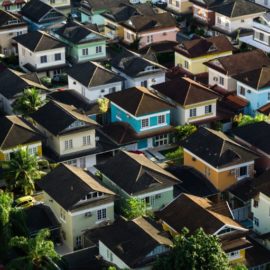
This is a free excerpt from one of Shortform’s Articles. We give you all the important information you need to know about current events and more.
Don't miss out on the whole story. Sign up for a free trial here .
How is climate change predicted to impact homeowners? How can you prepare for the potential threats?
Scientists predict there will be millions of climate refugees over the next few decades. Whether or not your home is directly threatened by climate change, that could mean major changes for you, and preparing for the worst is better than hoping for the best.
Keep reading to learn how to prepare for climate change as a homeowner, according to expert advice.
Preparing for Severe Weather & Climate Refugees
How climate change will affect you depends in large part on where you live. Odds are that you’ll fall into one of two categories: You’ll either be forced to move, or you live in an area those people will flock to. Either way, learning how to prepare for climate change may help you and your loved ones through the worst effects of climate change.
Millions of people around the world will soon find their homes threatened by wildfires, floods, and drought as a result of climate change, according to scientific models. One study from the Columbia Climate School projected that climate change will uproot anywhere from 48 million to 216 million people by 2050, while the Institute for Economics and Peace (IEP) predicted up to 1.2 billion climate refugees worldwide by 2050—that’s about 15% of the current world population. In the US alone, we’re likely to see millions of people fleeing the South and Southwest, moving toward New England and the Pacific Northwest to escape the deadly heat. These changes have already begun: For example, Australia is being asked to take in as many as 3,000 Pacific Islanders every year, and tens of millions have already been forced to flee their homes in Southeast Asia and Africa.
Deciding how to prepare for climate change depends on where your home is located. If you live in a coastal region, you may find your home threatened by rising sea levels as the polar ice caps melt. If you’re in an area that’s already prone to high temperatures, like the US Southwest, you might find the summer heat going from uncomfortable to deadly.
If your area isn’t directly threatened by climate change, it’s still worth learning how to prepare for a host of other related problems. Sudden, large influxes of climate refugees will create serious economic and logistical issues in the places they flee to. The White House recently released a report saying that, unless there are large-scale efforts to prepare housing and infrastructure ahead of time, the waves of immigrants are likely to overwhelm cities’ abilities to support them.
Preparing for Climate Change as a Refugee
If you’re in an area that may be severely harmed by climate change, make an evacuation plan. Figure out where you and your loved ones will go: perhaps someplace where you have family or friends to support you, or else a city that’s likely to avoid the worst effects of climate change. If it’s practical, look into leaving before it becomes an emergency.
It’s also important to know what you’ll take with you if you have to evacuate. You’ll need food, medical supplies, toiletries, and important documents like your passport or birth certificate. Have a “bug-out bag” ready to go in case you need to leave quickly, such as if a wildfire is approaching.
What to Do if Your Area Becomes a Climate Refuge
Learning how to prepare for climate change is also important for homeowners living in an area where climate refugees are likely to flee to. Brace for some dramatic changes—your city is likely to become a lot more crowded, meaning that housing and basic necessities like food could become more expensive, and jobs may be scarce. If possible, start preparing for that financial hardship now: Build up your savings and look for stable, long-term investments to support yourself through hard times.
Finally, no matter which group you end up in, it’s important to think about what opportunities this population shift might hold. Some scientists have predicted that, while the southern and western US collapse, the Pacific Northwest and New England will see corresponding economic growth as people move to those areas. So, don’t just think about how you’ll escape—think about where you’ll end up and what you could do to make a living in a rapidly growing area. For example, you might invest in housing or start a small business to cater to the influx of newcomers.

Want to fast-track your learning? With Shortform, you’ll gain insights you won't find anywhere else .
Here's what you’ll get when you sign up for Shortform :
- Complicated ideas explained in simple and concise ways
- Smart analysis that connects what you’re reading to other key concepts
- Writing with zero fluff because we know how important your time is






